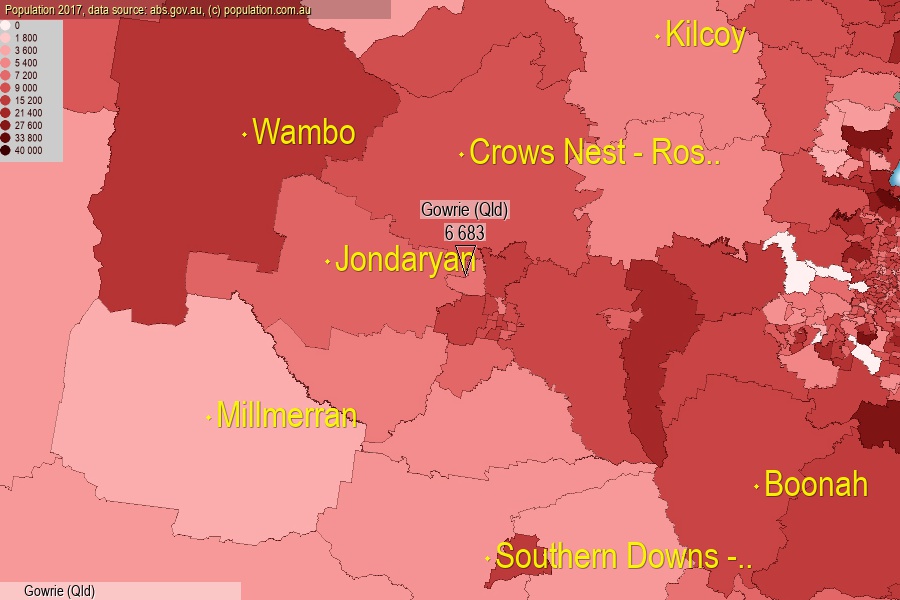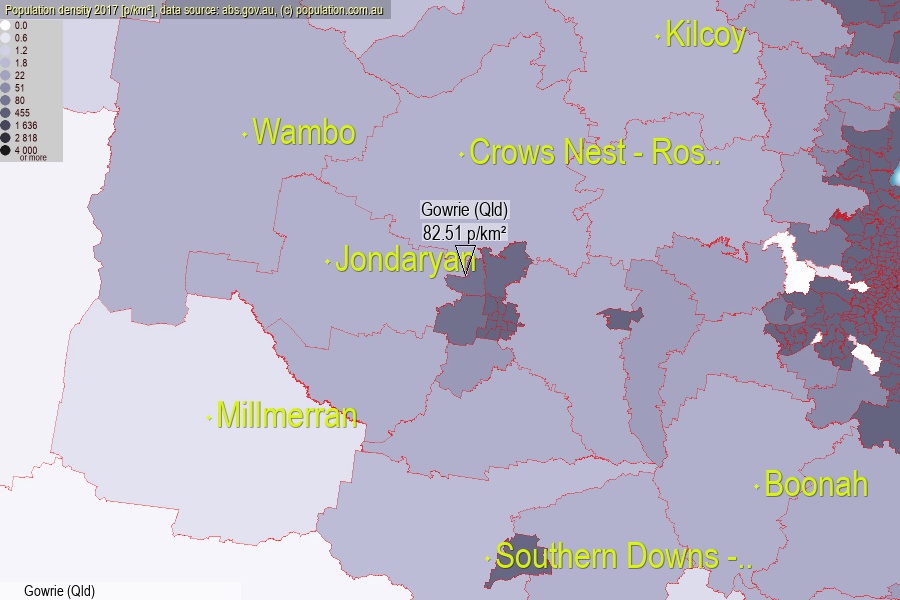 population.com.au
population.com.auLast official estimated population of Gowrie (Qld) (as Statistical Area Level 2) was 6 683 people (on 2017-06-30)[2]. This was 0.03% of total Australian population and 0.134% of QLD population. Area of Gowrie (Qld) is 81.00 km², in this year population density was 82.51 p/km² . If population growth rate would be same as in period 2016-2017 (+2.26%/yr), Gowrie (Qld) population in 2025 would be 7 994. [0]



Click to enlarge. Gowrie (Qld) is located in the center of the images.
Population [people], population density [p./km²] and population change [%/year] [2]
View borders » (new window) [4]
[1991-1992] +5.61 %/Yr.
[1992-1993] +4.84 %/Yr.
[1993-1994] +4.10 %/Yr.
[1994-1995] +2.82 %/Yr.
[1995-1996] +3.29 %/Yr.
[1996-1997] +2.83 %/Yr.
[1997-1998] +2.87 %/Yr.
[1998-1999] +4.09 %/Yr.
[1999-2000] +2.28 %/Yr.
[2000-2001] +2.93 %/Yr.
[2001-2002] +3.00 %/Yr.
[2002-2003] +1.98 %/Yr.
[2003-2004] +2.16 %/Yr.
[2004-2005] +3.83 %/Yr.
[2005-2006] +3.26 %/Yr.
[2006-2007] +4.90 %/Yr.
[2007-2008] +5.64 %/Yr.
[2008-2009] +5.65 %/Yr.
[2009-2010] +2.86 %/Yr.
[2010-2011] +3.40 %/Yr.
[2011-2012] +3.18 %/Yr.
[2012-2013] +3.92 %/Yr.
[2013-2014] +3.07 %/Yr.
[2014-2015] +2.12 %/Yr.
[2015-2016] +1.82 %/Yr.
[2016-2017] +2.26 %/Yr.
[0] Calculated with linear interpolation from officially estimated population
[1] Read more about SA2 and Australian Statistical Geography Standard (ASGS) on abs.gov.au
[2] Population data from Australian Bureau of Statistics (Population and density: 2017; change: 2016-2017)
[3] Digital Boundaries: Australian Statistical Geography Standard (ASGS) 2016.
[4] Border coordinates are simplifyed using Ramer-Douglas-Peucker algorithm.